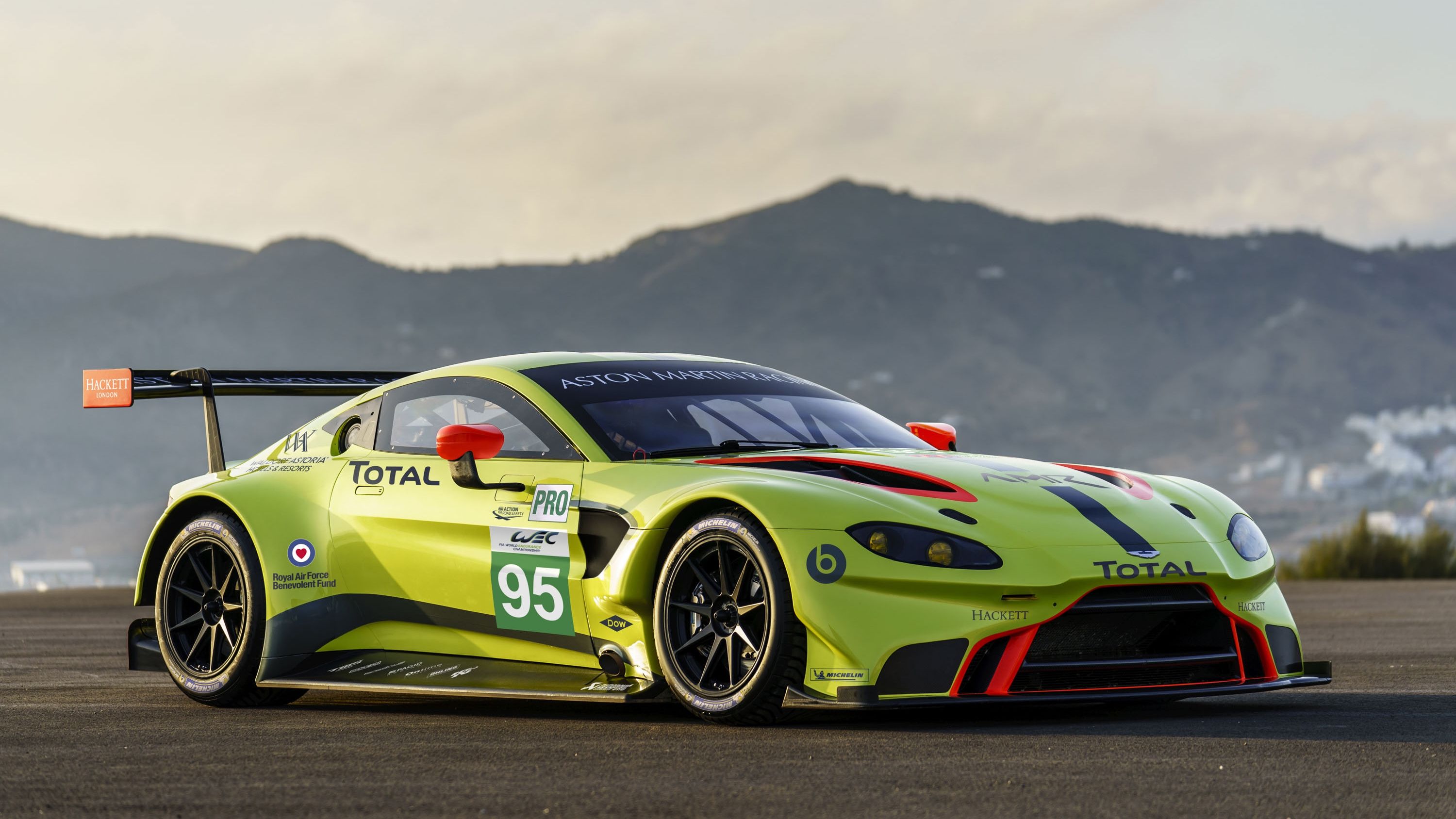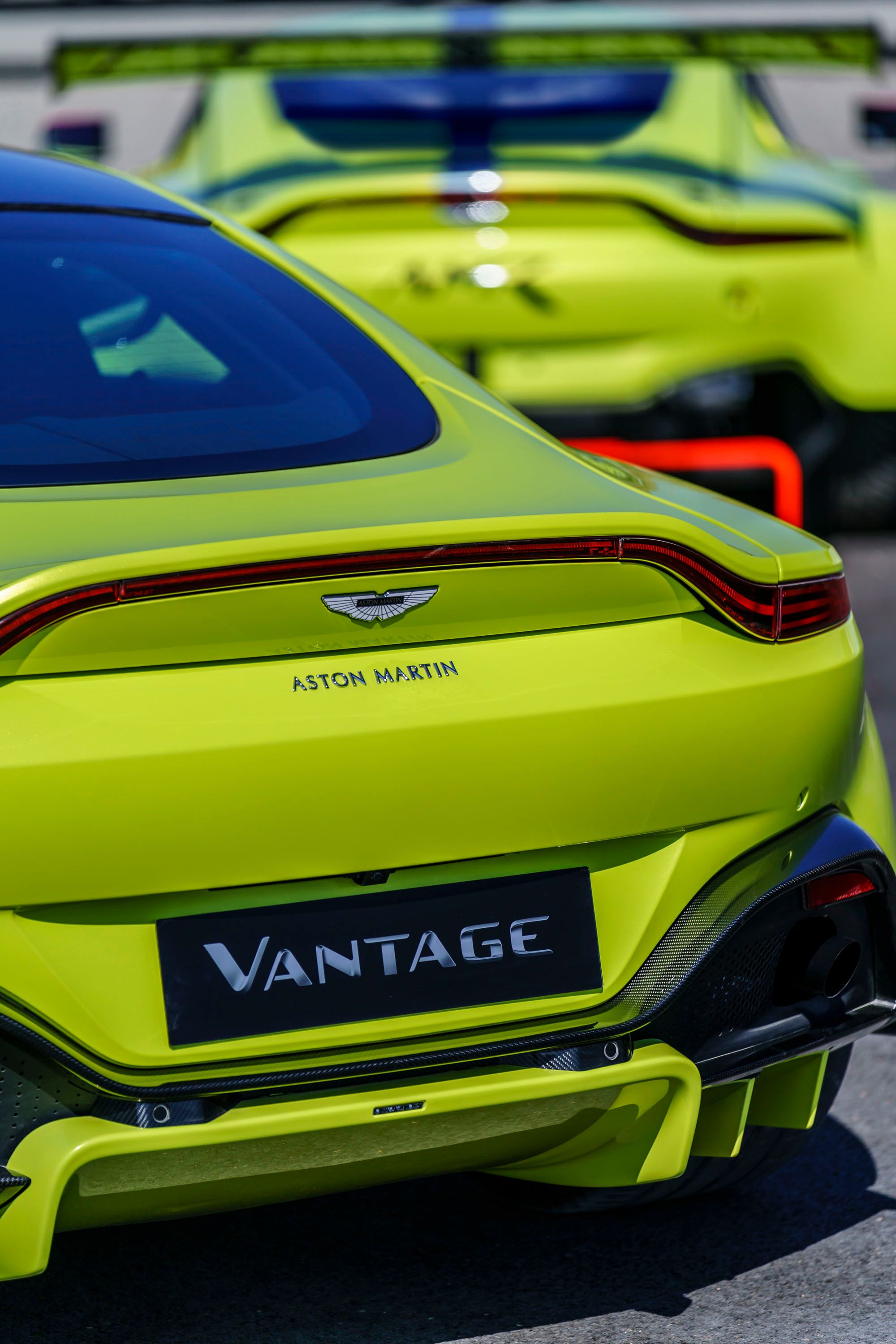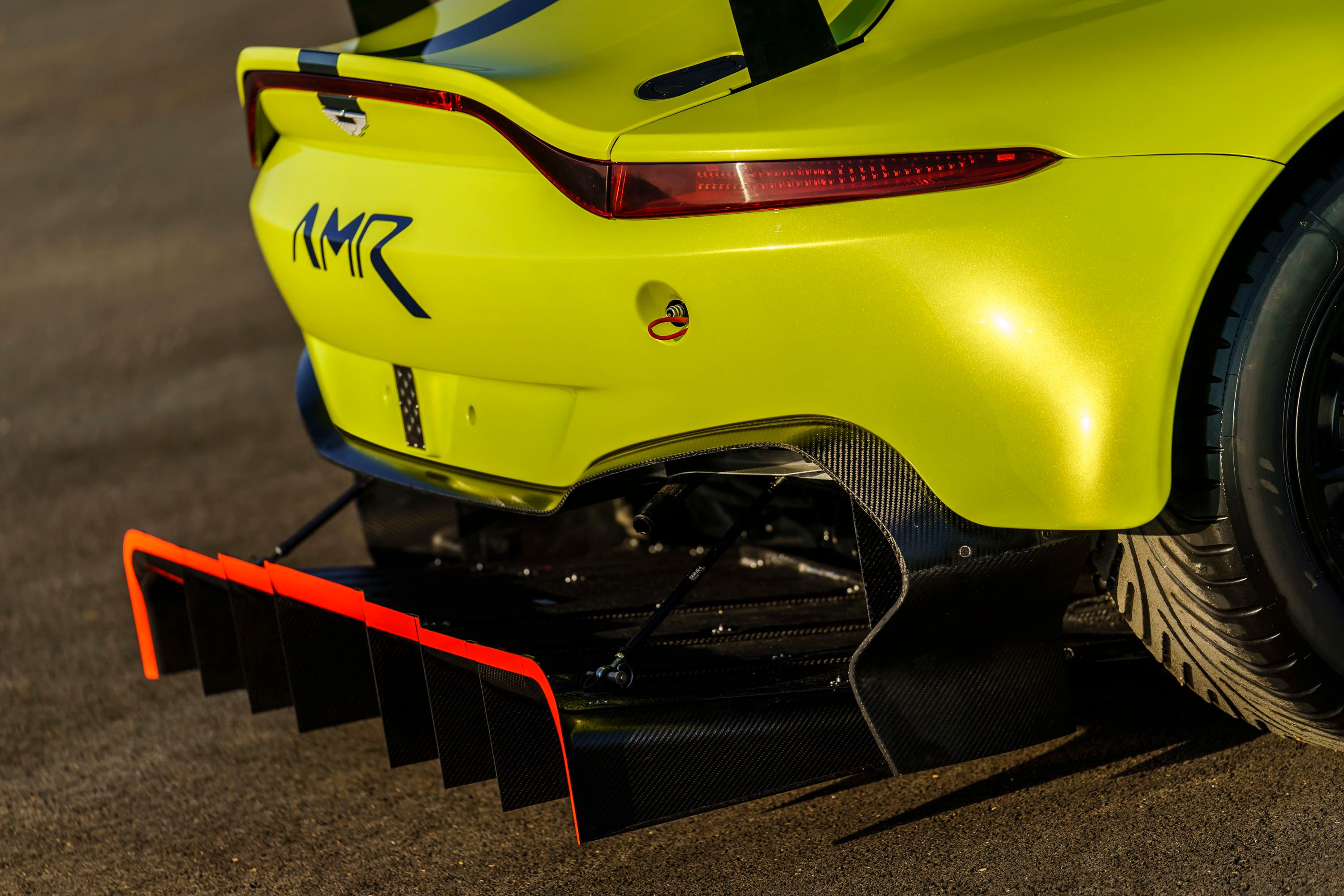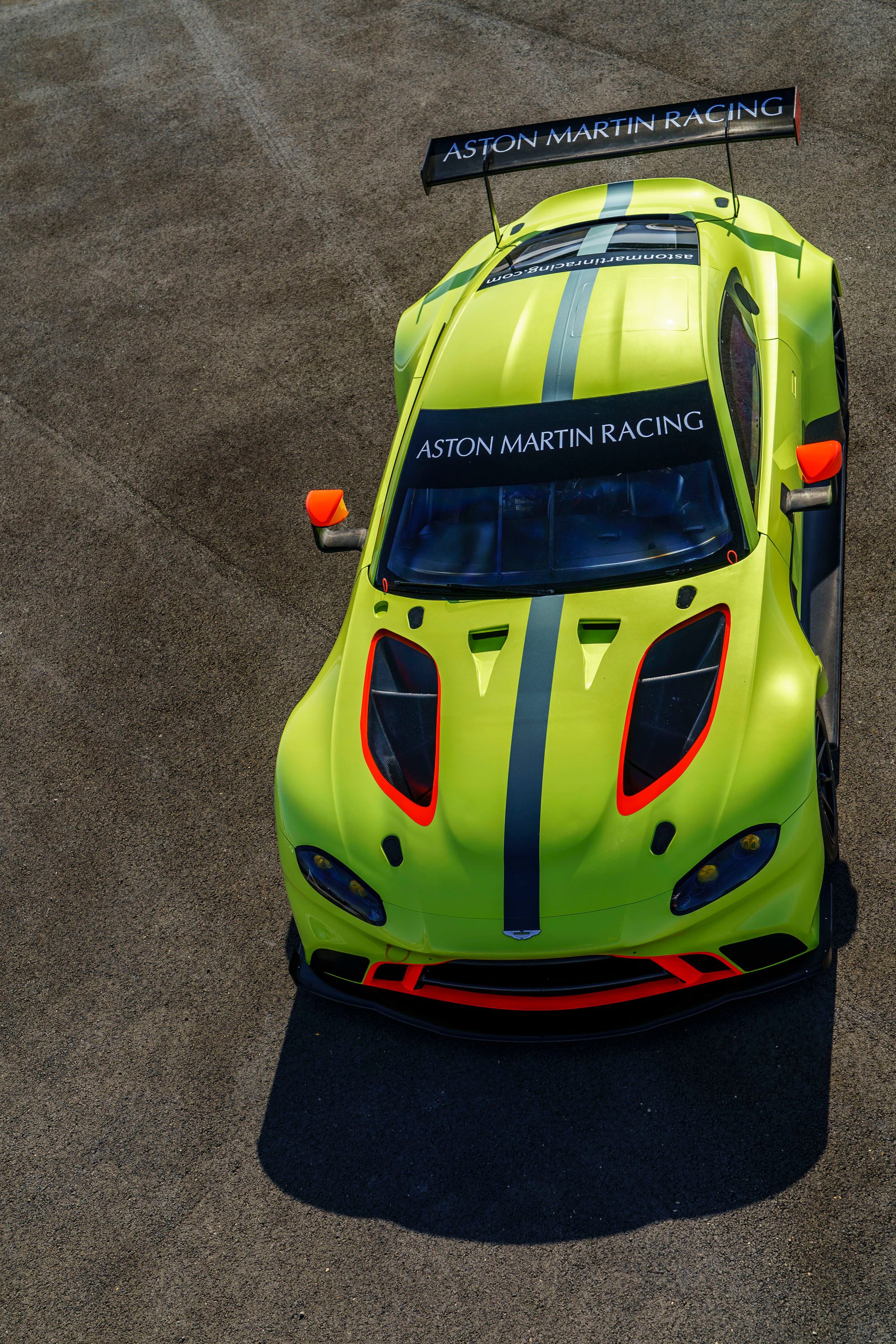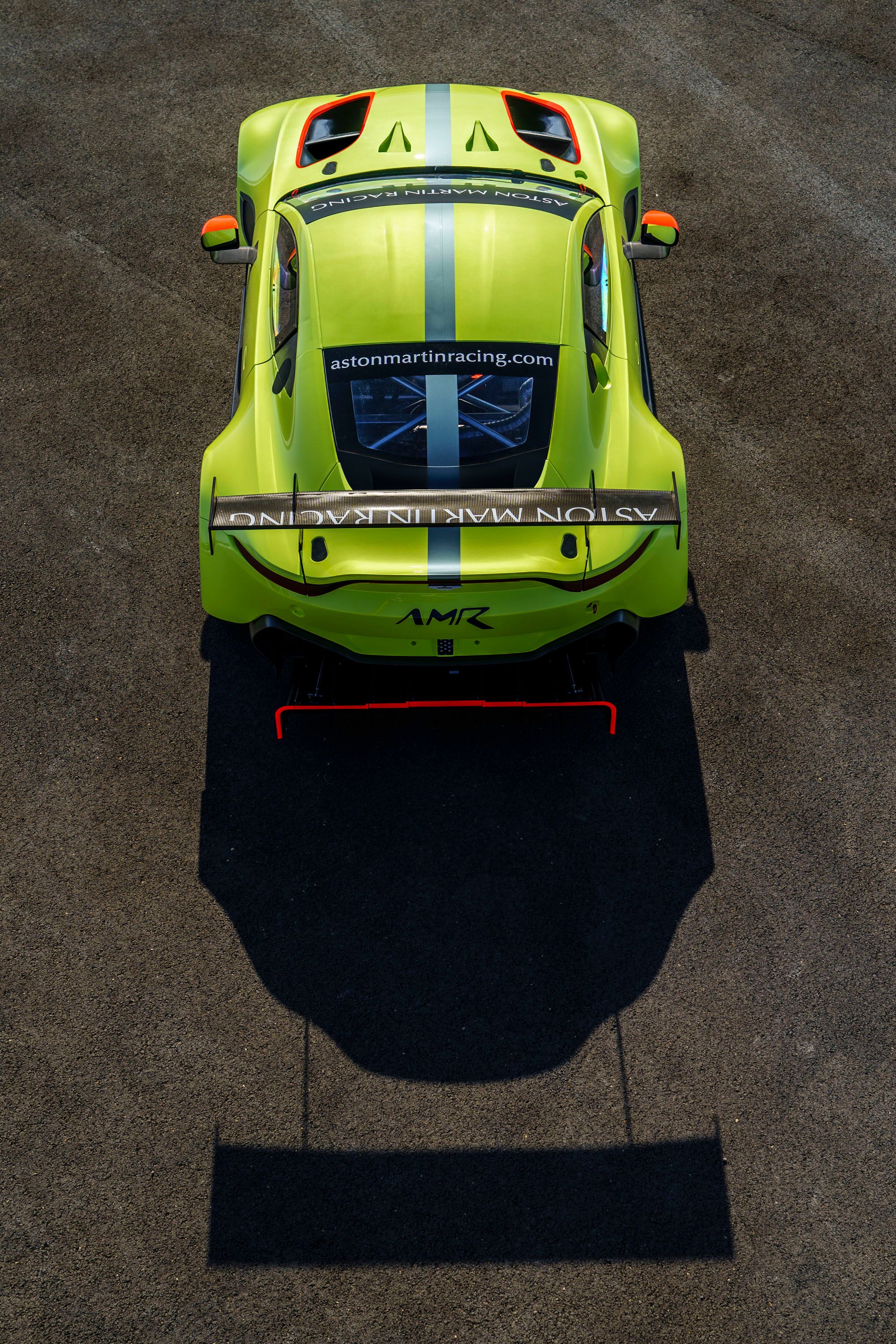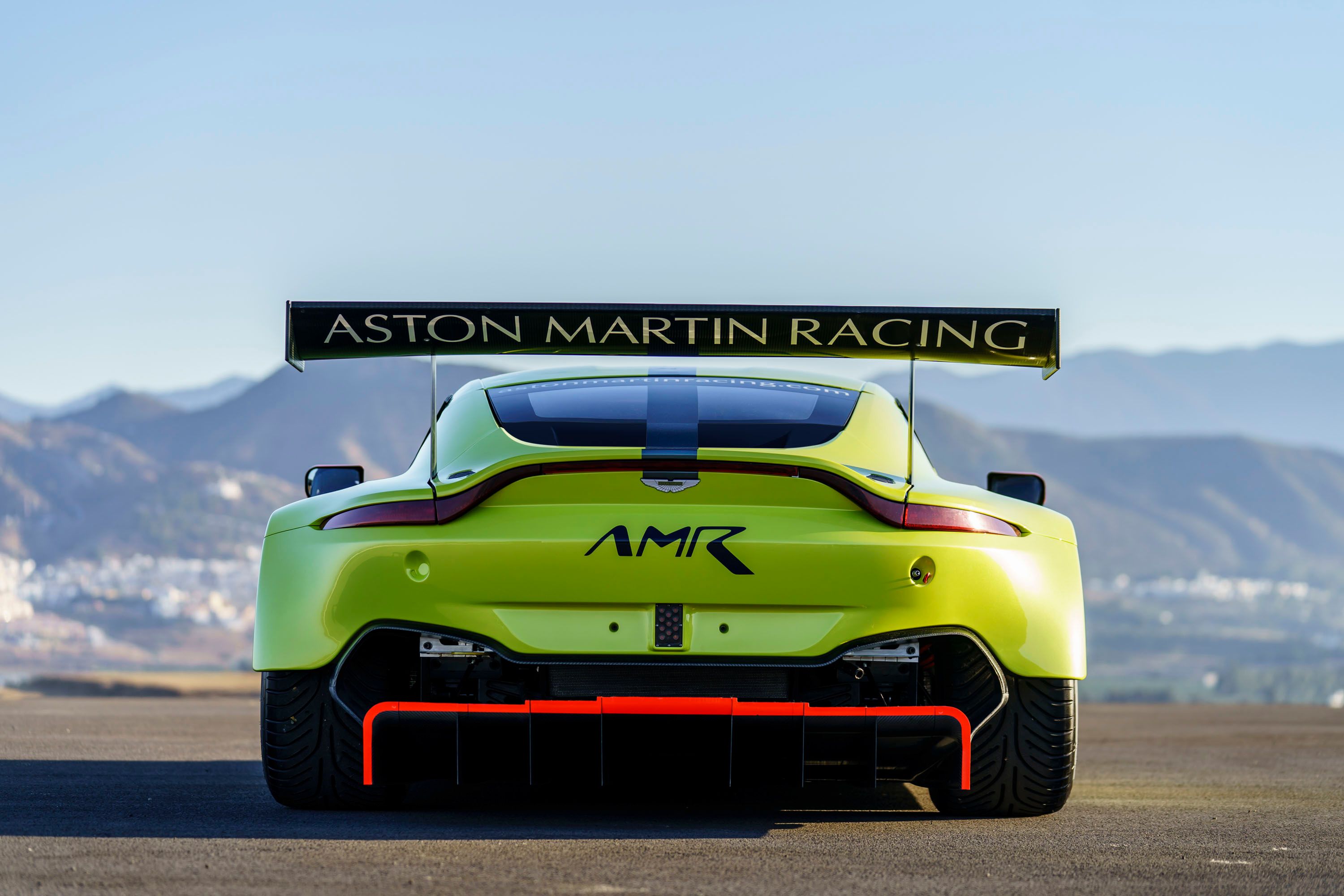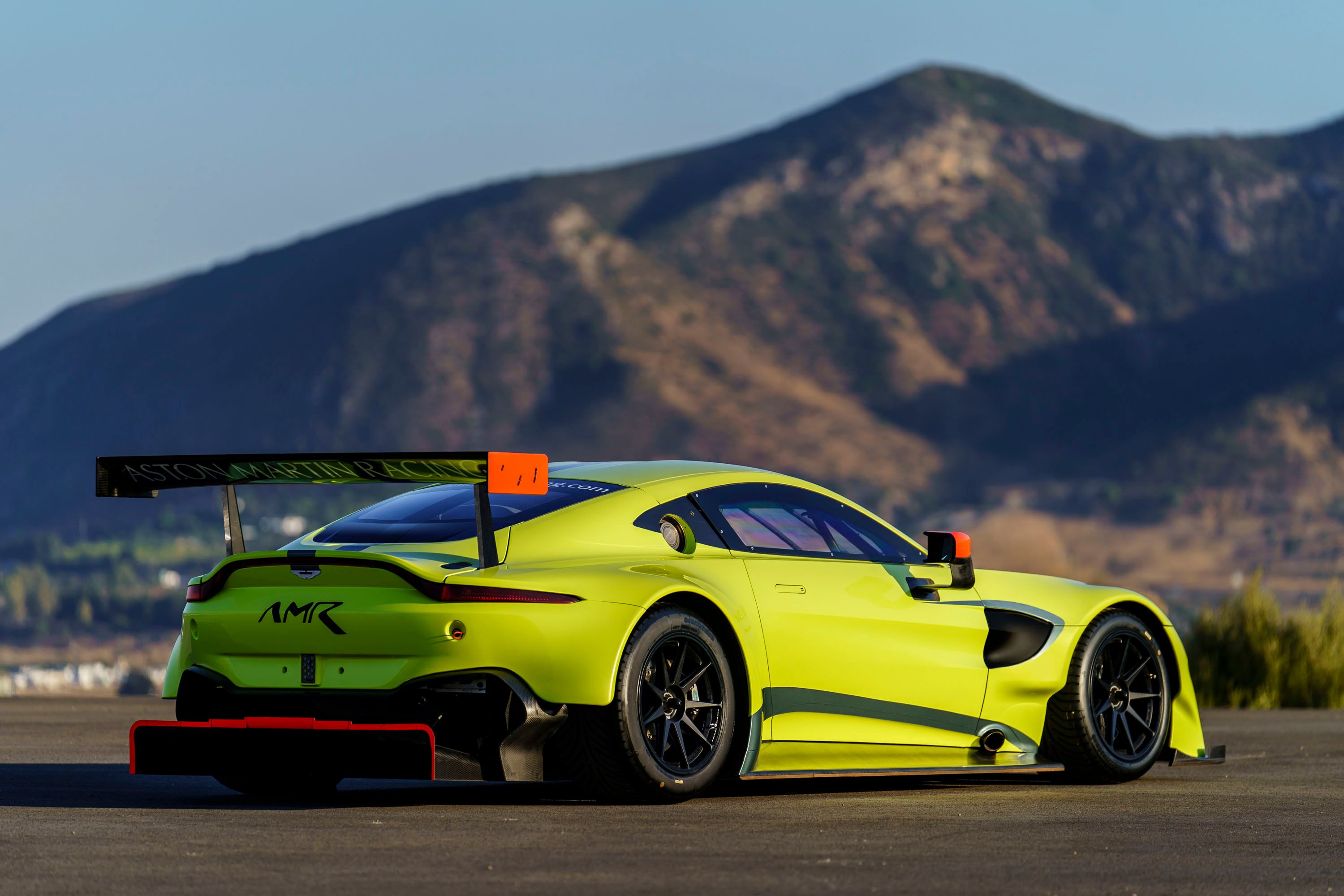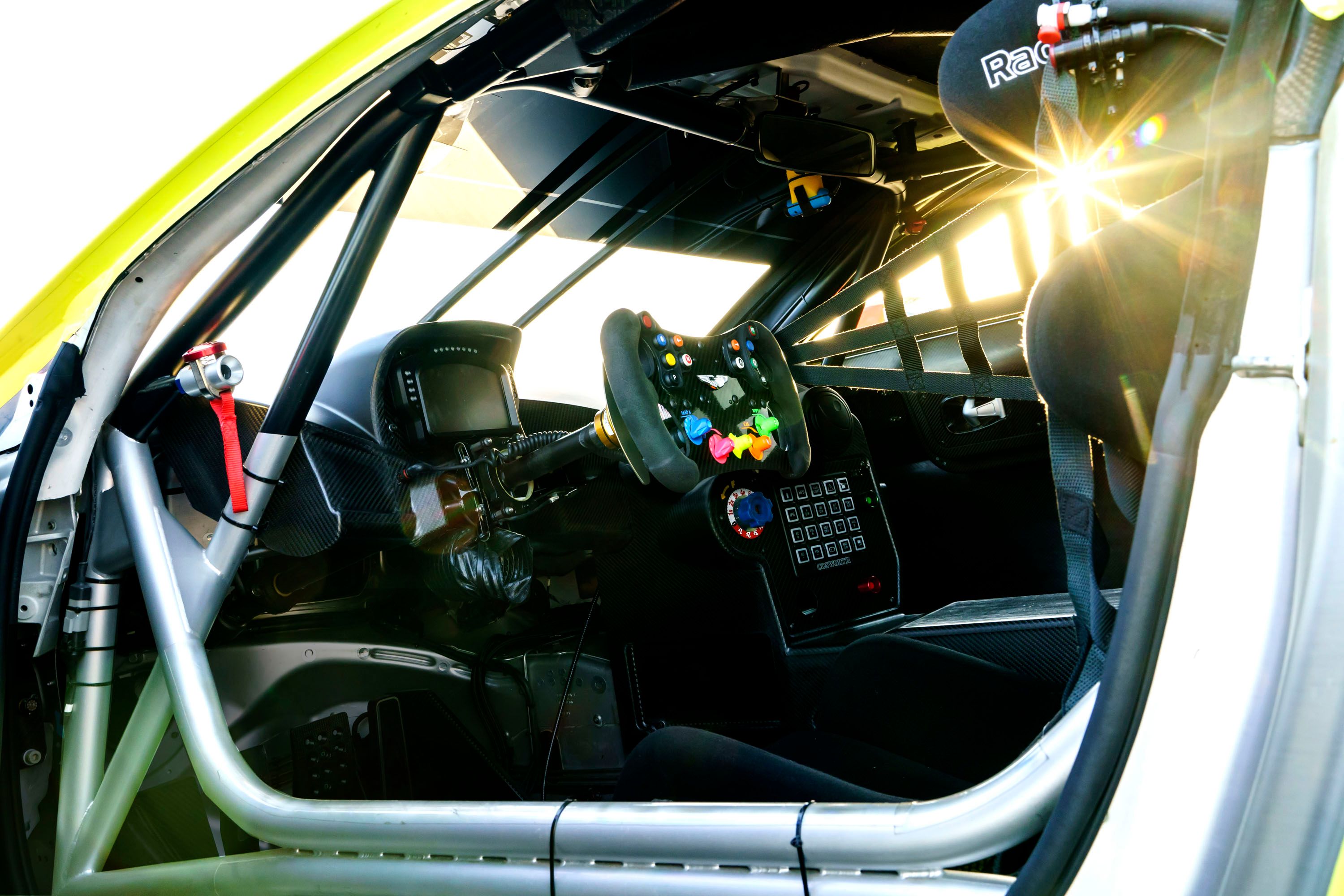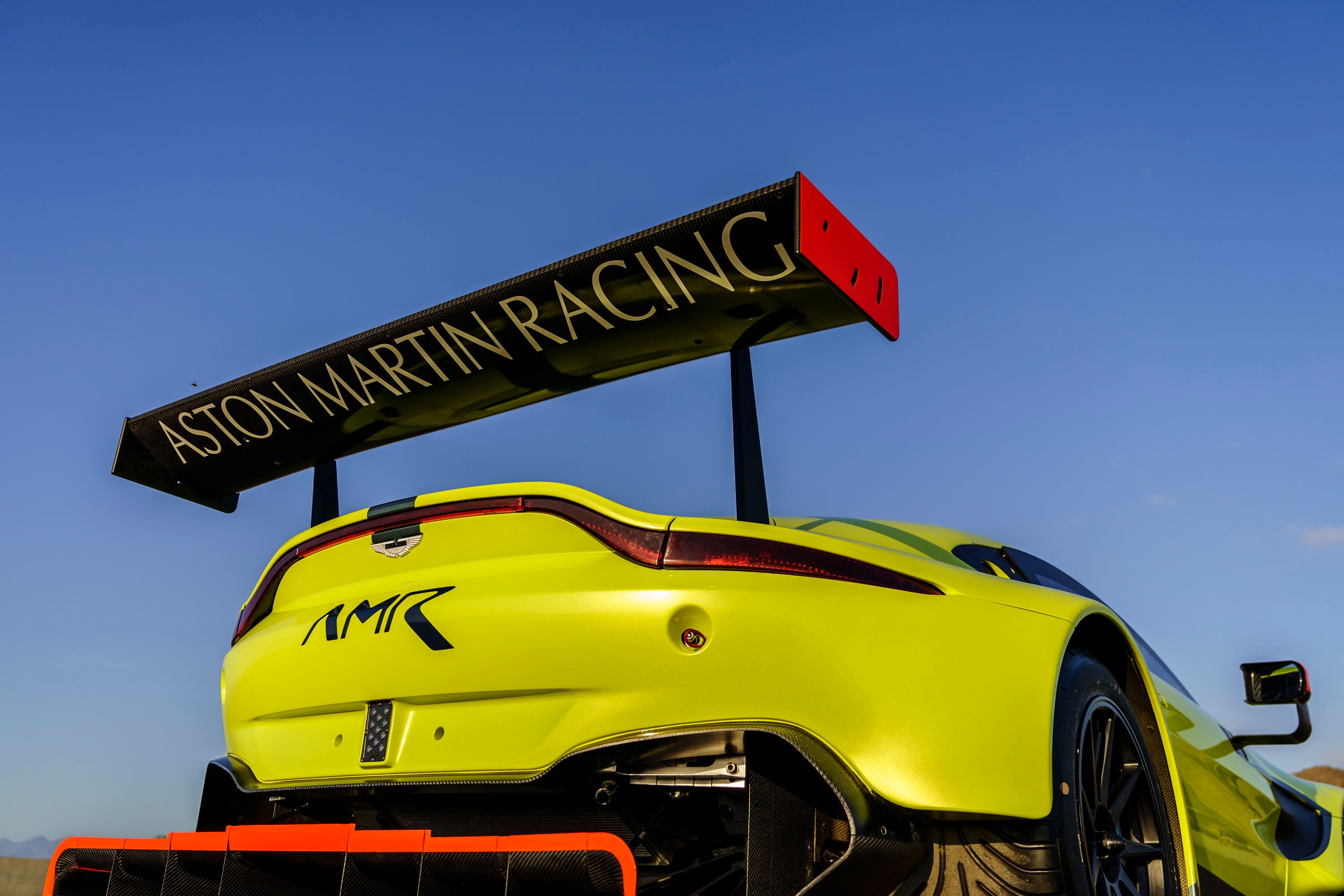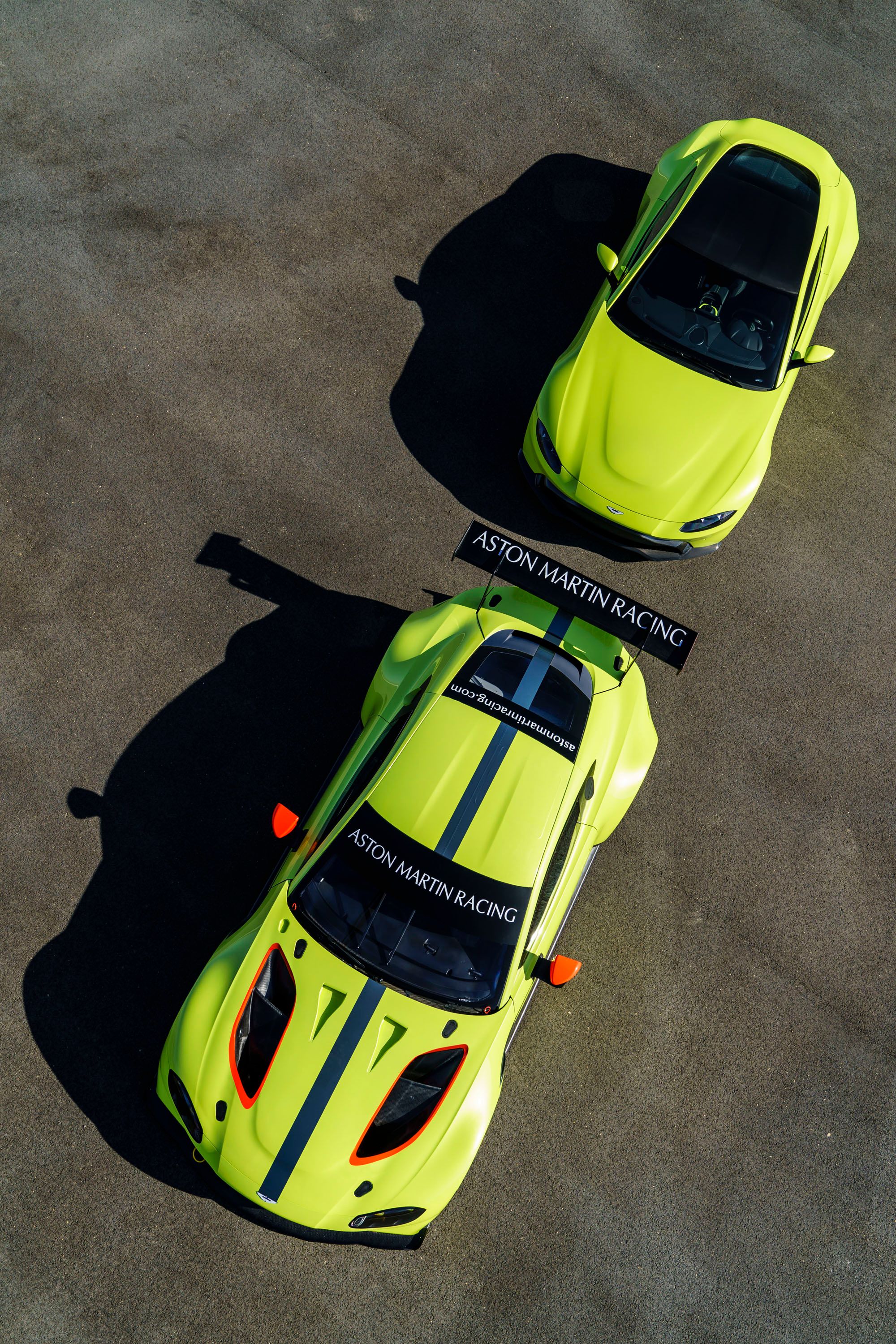After no fewer than 12 years on the market, the first-generation Vantage was finally replaced by a brand-new car. Revealed in November 2017, the second-gen Vantage joins the DB11 in Aston Martin's new lineup of cars that use completely new underpinnings and a fresh design language. Alongside the road-going coupe, Aston Martin also unveiled the Vantage GTE race car, which will compete in the FIA World Endurance Championship and at the 24 Hours of Le Mans.
Built by the same team that developed the outgoing V8 Vantage GTE, the new race car replaces the company's most successful competition car of all-time, credited with 37 of the team’s 51 international race victories, including two Le Mans 24 Hour class wins. With extensive optimization of the powertrain, chassis, and aerodynamics, Aston Martin hopes that the new Vantage GTE will be at least as successful as its predecessor.
Although it was just revealed, the race car is under development for many months and has already completed more than 8,000 miles of testing, a 30-hour run at the Navarra track in Spain, as well as a rigorous durability program at Sebring in Florida. Aston Martin says it will keep most of the 2017 driver lineup for the new Vantage GTE. This includes Le Mans GTE Pro class winners Darren Turner and Jonny Adam, as well as the Danish duo and 2016 FIA WEC GTE Pro world champions, Nicki Thiim and Marco Sorensen. In addition, AMR has recruited ex-GP2 race winner and now Formula E racer Alex Lynn.
Continue reading to learn more about the Aston Martin Vantage GTE.
2018 Aston Martin Vantage GTE
- Make: Array
- Model: 2018 Aston Martin Vantage GTE
- [do not use] Vehicle Model: Array
Exterior
Much like its predecessor, the new Vantage GTE adds a ton of steroids and a rear wing to the road car. And with the new street coupe now more aggressive design-wise, the race car is an incredible display.
The new Vantage is a significant departure from the old model from just about every angle. Up front, it has a massive grille that goes all the way down to the splitter and sleeker headlamps that give it a menacing look. The sculpted hood adds even more muscle. The race car has an even pointier nose, while the grille mesh of the road was replaced by a couple of horizontal slats, giving the race model an open grille design that's rather common in motorsport.
In the interest of aerodynamics, Aston Martin separated the lower corners of the grille to make two additional vents, added two more openings toward the sides, and fitted a wider, longer splitter. The engine hood retains the shape of the standard model, but two massive vents were added on each side to improve cooling of the modified V-8 engine.
Moving onto the sides, we can clearly see that the GTE inherited the redesigned profile of the road car, including the big C-shaped strake on the front fender, the sculpted side skirt, and the beefed-up rear haunches. And as you'd expect from a race car, the GTE package enhanced everything. The side skirts are massively wider and include the traditional side-exit exhaust, while the wheel arches are wide both front and rear. The quarter window was covered and now hosts the fueling cap, while the standard side windows were replaced by polycarbonate, lightweight units. The side mirrors are also now, featuring an aerodynamically optimized design.
The rear section of the new Vantage is as sexy as they get. The extremely thin taillights follow the sinuous shape of the deck lid, while the tall bumper makes room for a unique diffuser. There's a big plane section in the middle, flanked by a couple of vertical fins on each side. Above these, the bumper hosts massive vents that include stop lights, exhaust pipes, and a mesh grille. The race car retains everything, but the lower bumper was stripped off to make way for a huge diffuser that extends several inches from the body. Atop the trunk lid, Aston Martin fitted a tall wing to further improve aerodynamics. A race-style red light is mounted in the bumper to increase visibility on wet tracks.
All told, the new Vantage GTE is a show stopper and should become a crowd pleaser in its first WEC season.
Interior
It rarely happens for carmakers to publish photos of race car interiors, but I'm happy to report that Aston Martin released two high-res shots of the cockpit. As you might have already guessed, the GTE's interior has very little in common with the production car. While the new road-going Vantage boasts a sporty interior with plenty of luxury features, the GTE was overhauled to meet the safety rules laid by the FIA for the World Endurance Championship.
The first thing that catches the eye is the roll cage that spreads over the lower doors and the roof. The standard dashboard was replaced by a carbon-fiber shell, while the instrument cluster looks nothing like the fancy display from the road car.
The center stack is gone too, replaced by a carbon console, apparently made by Cosworth, packed with loads of buttons, switches, and knobs. The center console is also made from carbon-fiber, much like almost everything else inside the cockpit.
The steering wheel is also made from this lightweight material but comes with Alcantara grip sections. Each gives the driver access to six different buttons, which le lower section of the steering wheel includes six bright colored knobs. I wonder what the pink one does... Finally, we have the lightweight, heavily bolstered seats that keeps the driver in place during hard cornering. Aston Martin had nothing to say about the technology behind all those panels and screens, but it's safe to say that the Vantage GTE is ready to kick some Ferrari and Porsche butt on the race track.
Drivetrain
Under the hood of the Vantage GTE, lurks a twin-turbo, 4.0-liter V-8 engine. The mill is based on the V-8 found in the road car, which in turn is borrowed from Mercedes-AMG. Yup, it's a revised version of the 4.0-liter that debuted in the Mercedes-AMG GT sports and later found its way in other AMG models, including the C63, E63, and GLC63. Of course, the engine in the race car was modified for track duty, so the two units don't share too many components.
However, it's safe to say that the powerplant is related to the 4.0-liter V-8 that motivates the Mercedes-AMG GT3. The engine was further optimized to the Vantage GTE's aerodynamics, and Aston Martin reports that its drivers say the car is easier to control on the limit than the previous model. Again, not much info is offered here, but the British firm says that the Vantage GTE now uses an Ohlins suspension system, an Alcon braking system, and a set of bespoke Michelin tires.
There's no word on output either, but the car could hit the track with anywhere between 450 to 550 horsepower, depending on its curb weight.
Competition
The new Vantage GTE will compete in the LMGTE category of the FIA World Endurance Championship, which includes both professional and amateur divisions. LMGTE-Pro is for factory-backed teams, while LMGTE-Am is for gentleman drivers. A final list of competitors for 2018-2019 has yet to be announced, but it's safe to assume that last year's cars will continue with minor changes. The Vantage GTE will go against at least three competitors: the Ford GT, the Ferrari 488 GTE, and the Porsche 911 RSR.
Ford GT
Introduced in 2016, just in time to celebrate 50 years since Ford's first win at the 24 Hours of Le Mans, the GT is a heavily modified version of the road-going supercar. Upgrades are very similar to the Vantage GTE and include a more aggressive splitter, a vented front hood, wide side skirts, and a big wing atop the decklid. But unlike the Vantage, the Ford GT comes in a mid-engined configuration. It also uses a smaller, 3.5-liter V-6 engine. The EcoBoost unit is turbocharged, and it's based on the same unit used by Ford in its IMSA Daytona Prototype race car in 2014. Output is rated at around 500 horsepower and enables the GT to hit top speeds in excess of 200 mph. The GT has already won the 24 Hours of Le Mans race in its class in 2016, but also scored 1-2 finishes at Fuji and Shanghai. In 2017, it won at Silvestone and Shanghai, and finished second at Le Mans. With Chip Ganassi Racing at the helm, Ford ended the season in second place, behind Ferrari, but above Porsche and Aston Martin.
Read our full story on the 2017 Ford GT Le Mans.
Ferrari 488 GTE
Built around the 488 GTB that replaced the iconic 458 Italia, the 488 GTE also joined the motorsport scene in 2016. With a more menacing stance, revised aerodynamics, and new technology, the 488 GTE is the quickest and most advanced race Ferrari has ever built (excluding prototypes of course). The 488 GTE is also a mid-engined racer, but it still uses a V-8 engine. When Ferrari replaced the 458 Italia's naturally aspirated 4.5-liter V-8 with the twin-turbo, 3.9-liter V-8 in the 488 GTB, the racing division did the same for the GTE. The road car's unit pumps an impressive 660 horsepower and 560 pound-feet of torque, but the race car hits the track with less than that, mostly because it's lighter and output for WEC cars is decided based on the power-to-weight ratio. The GTE is currently the car to beat in LMGTE-Pro. In 2016 it scored three wins and five podiums in nine races, winning the championship against Aston Martin. In 2017 it had a similar run and won the title ahead of Ford by a comfortable margin.
Read our full review of the 2017 Ferrari 488 GTE.
Vantage GTE Racing History
The GTE's racing program began back in 2008, when the class was called the GT2. The most powerful V8 Vantage ever made at the time of its release, the Vantage GT2 was offered as a customer car for use in the FIA GT Championship, American Le Mans Series, Le Mans Series, and 24 Hours of Le Mans. Power came from a modified version of the standard 4.3-liter V-8, which had displacement increased to 4.5 liters and received numerous competition components, including cylinder heads, con-rods, valves, camshafts, a racing exhaust system, and dry sump lubrication. The GT2 was raced until 2013 by either factory-backed or privateer teams and was entered in 85 events. The car scored two overall wins and three class wins. Notable results were obtained at Brands Hatch, Silverstone, but the GT2 made appearances on just about every famous race track around the world.
In 2012, Aston Martin returned to a GT based program and relaunched the Vantage GT2 as the GTE. The Brits made big upgrades to the car and fixed the serviceability that prevented the GT2 from reaching its full potential. It created a new modular construction with a series of detachable bars in the front structure, allowing the engine to be pulled straight out of the car. This reduced engine changes from up to four hours to less than hour. The rear suspension and subframe have also been modified, while the fuel cell has been repositioned within the roll cage to reduce the risk of damage in an accident. Aston Martin also made changes that improved cooling and aerodynamics, so the GTE was a significantly better car.
This became obvious on the race track, where the GTE returned better results. Raced in around 200 events, the GTE scored 37 class wins, achieving success at Silverstone, Fuji, Shanghai, and Spa-Francorchamps. It also won the 24 Hours of Le Mans twice. Although it didn't win the LMGTE manufacturers' title in its six-year run, it scored 13 class wins and an additional 18 podiums. It came close to winning the title in 2013 and 2016, though. In 2016, the GTE won the teams' championship in LMGTE-Pro, and in 2017 it scored a similar performance in the LMGTE-Am class. With a total of 37 wins, it's Aston Martin's most successful race car to date.
Conclusion
A quick glance at the history above is enough to notice that the new Vantage GTE has a big pair of shoes to fill. With new aerodynamics, a better and lighter chassis, and a new engine that has already demonstrated its solid reliability with Mercedes-AMG, it's tempting to believe that the second-gen GTE will surpass its predecessor. But it's not as easy as its sounds, because the other automakers compete in this class are also making big improvements to their cars each year. Ferrari is basically dominating the LMGTE category, while Ford and Porsche have the means to win just about any race and, with a bit of luck, the championship. It's too early to describe the new Vantage GTE as a solid contender to the championship, but it could definitely do what its predecessor didn't: beat Ferrari to the LMGTE title.
References
Aston Martin Vantage
Read our full review on the 2019 Aston Martin Vantage.
Read our full review on the previous generation 2017 Aston Martin Vantage GTE.
Read more Aston Martin news.

